Let’s talk about boundaries.
He quietly walked over to the whiteboard while the rest of us talked.
After a few minutes, I looked over to see what he had been scrawling:
Baste the lame doe.
Encase the faint glow.
Race the vain crow.
Lace the train slow.
Deface the drain toe.
Trace the vein, bro.
Mace the plane toe.
Huh?
It was 2012, and I was working as a design director at Big Spaceship. We had just won the pitch to be Wrigley’s agency of record, and were working on digital strategy for their candy brands: Starburst, Extra, Orbit, Life Savers, and more.
This brainstorm was for the one we were most excited about:
Skittles.
The project was assigned to a different team, but we had an open-door policy: anyone could jump into any brainstorm at any time. I wasn’t missing this one.
At some point, someone noticed what he was doing.
“Are you just writing phrases that rhyme with [Skittles tagline] ‘Taste the Rainbow’?”
Jamie Kosoy nodded. “Yep!”
Then he sat down.
Nobody spoke about it again.
Later that day, group design director Dave Chau showed up with one of the most inventive designs I’ve seen to this day. Fitting to the time, the site was an infinitely scrolling rainbow packed with weird internet energy:
- Embedded tweets, GIFs, and Tumblr posts
- “The Rainbow Wars” leaderboard, where all the Skittles colors ranked in order of how many times that color was being tweeted in real-time
- A collection of some of the weirdest things on the internet
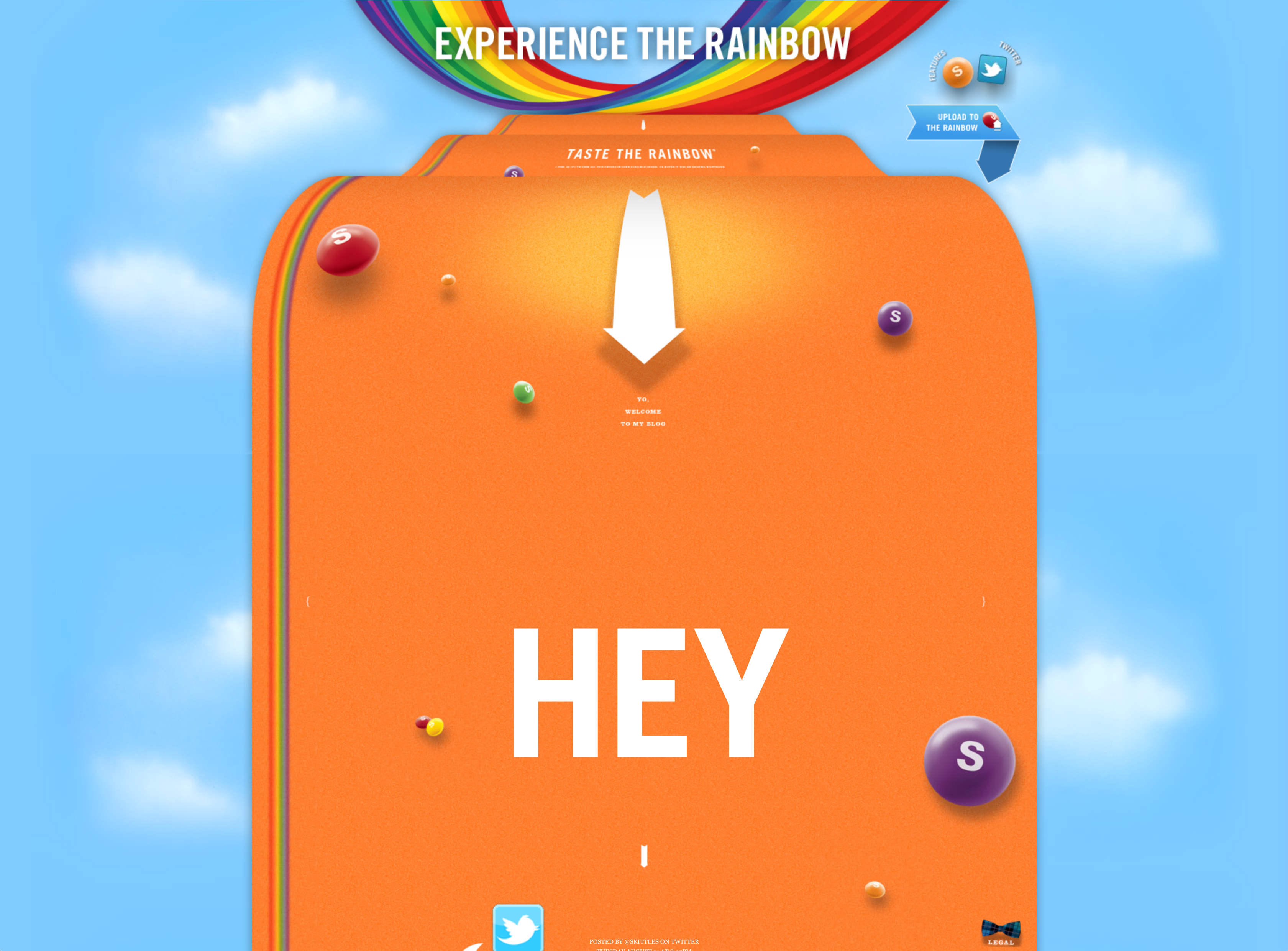

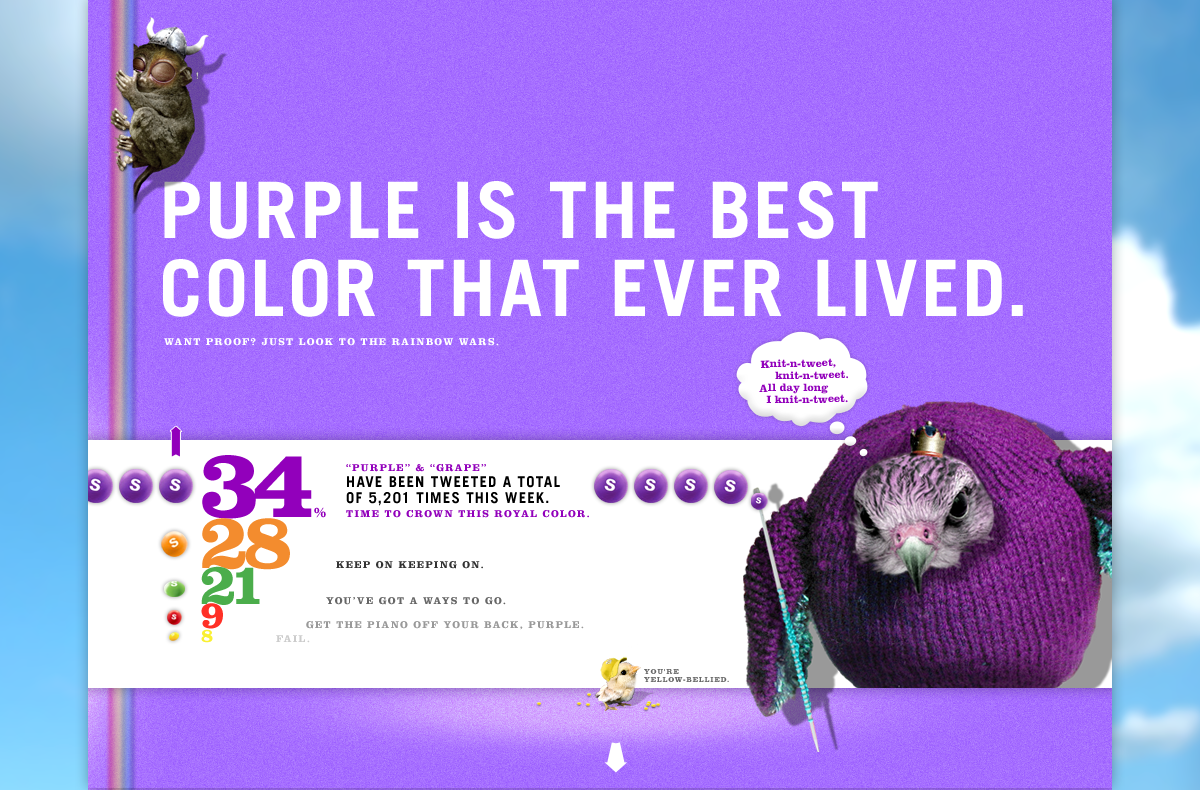
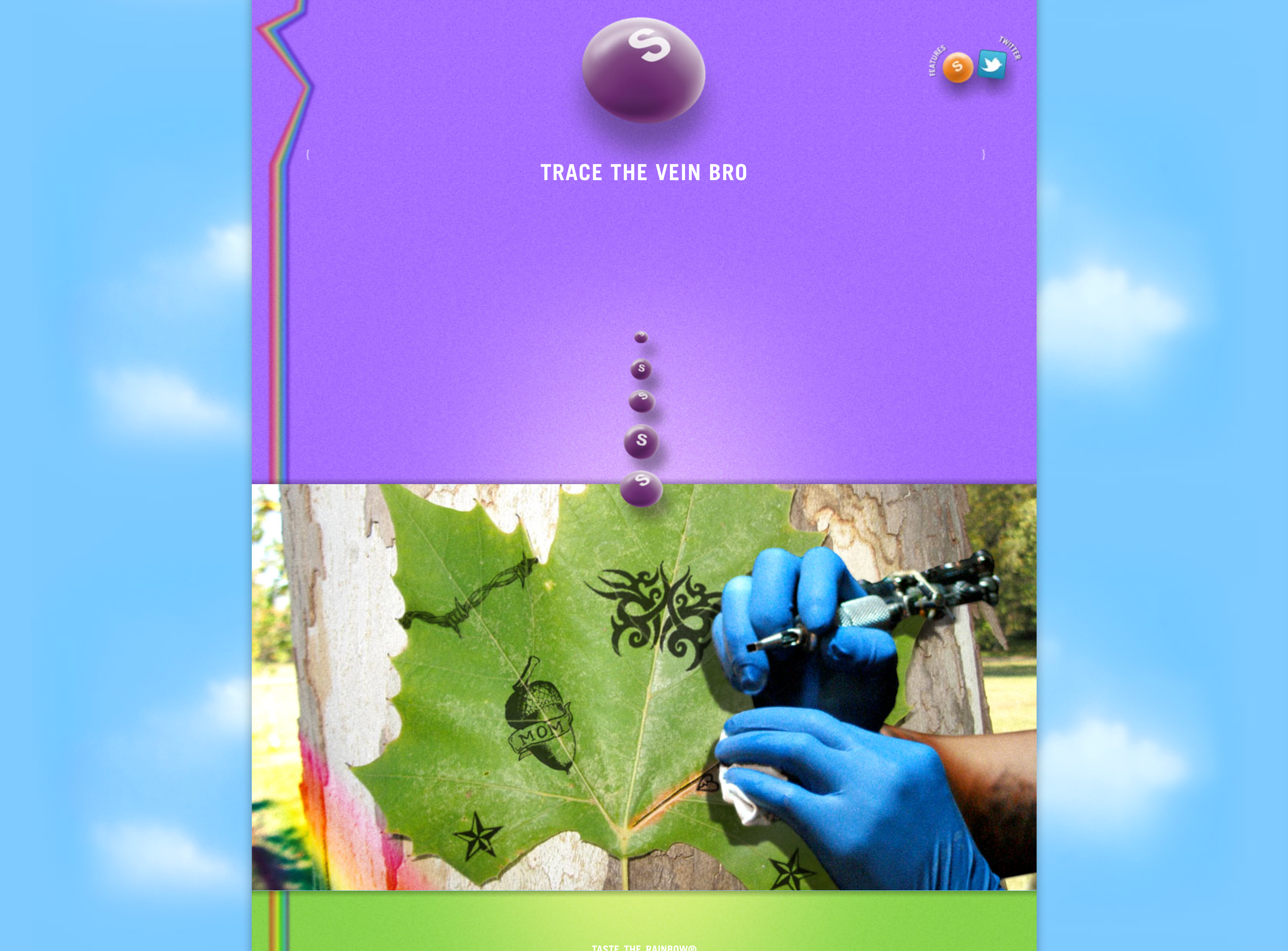
Particularly of note were some graphics that appeared every so often called “Intermissions.” Dave had taken Jamie’s random phrases and illustrated them.
“Trace the vein, bro” turned into gloved hands holding a tattoo gun, inking common tropes between the venation on a giant leaf.
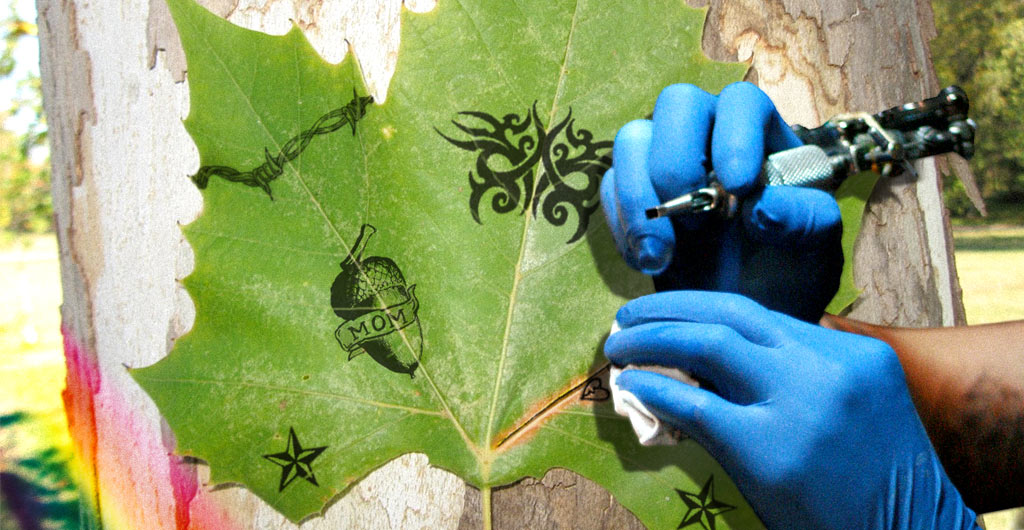
“Race the vain crow” turned a derby leader into a bird staring at itself in a mirror.
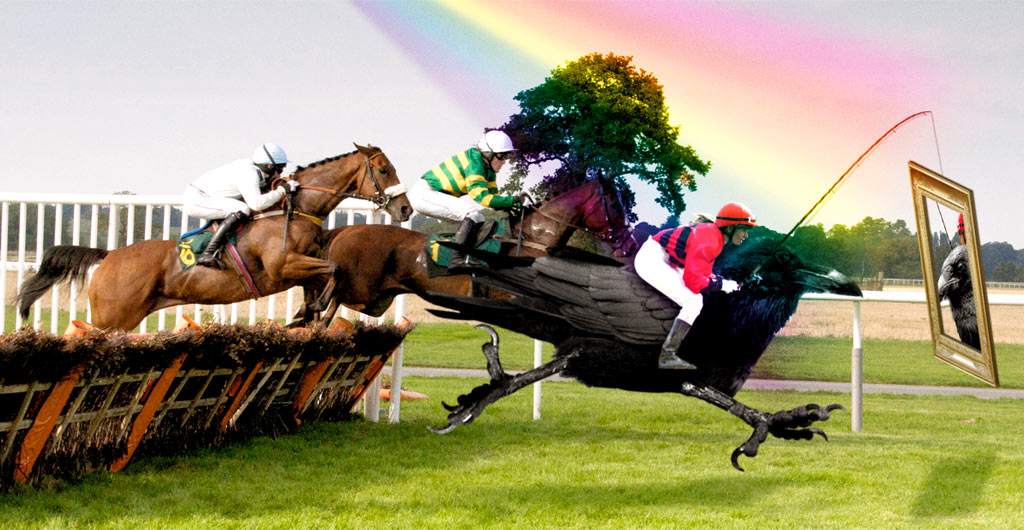
You get the point.
Or maybe you don’t, which is kinda the point.





The cost of a dumb idea
Thirteen years later, I asked Jamie what he remembered about that brainstorm.
Jamie is one of my best friends and one of the most creative and inspiring people I know. Whenever I’m stuck in a creative rut or need help thinking about things differently, Jamie is who I call.
“Ideas are cheap,” Jamie matter-of-factly explained to me. “Writing nonsense on the whiteboard takes under a minute and a few cents of marker ink. If no one likes it, we can move on.”
But that’s not how most people work. Across hundreds of teams, I’ve seen the opposite: the fear of embarrassment stops people from saying anything at all.
I wondered aloud if Jamie immune to that fear.
He told me a story in response.
Whenever a new role opened up at companies he’s worked for, he’d ask his team, “Do you know anyone great for this?” People would often say yes, but that their friend had just started a new job, so they probably wouldn’t be interested yet.
“That’s an artificial ceiling,” Jamie said. “We could just ask. Emails are free. Worst case? They’re not interested but flattered that you thought of them and you get to catch up.”
He’s right. And it’s the same thing with ideas.
Is Jamie just the smartest guy in the room?
He shrugged that off. “There’s not much smart about ‘Baste the lame doe.’”
Hard to argue with that 🤣
Why weird stuff works
So what made that brainstorm work?
Jamie pointed out that a lot of brainstorms today—and meetings in general—suck. They’re performative. They’re stuffed with buzzwords like “data” and “business results.” They’re designed to get to something—anything—on a deadline.
That wasn’t our vibe.
Jamie said it best: “We liked each other too much to let ourselves have boring meetings.”
The goal wasn’t results. It was fun. Even if it meant ending a session with nothing to show.
Total sacrilege today.
He compared it to a sitcom writer’s room. “When I’m in a brainstorm that’s flowing, my heart beats faster. I feel like a puppy.”
Is that what leads to smart ideas?
Not according to Jamie. In fact, just the opposite. “When you’re focused on having fun, you sometimes come up with ridiculous ideas. It unlocks being even dumber.”
I’m sure many memories of inebriated college nights with friends can corroborate this sentiment.
Jamie’s a longtime fan of Calvin and Hobbes creator Bill Watterson. He’s inspired by Watterson’s definition of creativity:
Putting your butt in the chair and staring blankly into space until inspiration hits you.
House money
Maybe Jamie’s fearless?
Not true. He admitted to a deeply-seated fear: that he’s not good enough or smart enough.
I can relate.
The antidote for him is simply being invited to the conversation in the first place. That‘s the validation that he is smart enough, good enough.
“Once I’m invited, the rest is gravy. I can say anything I want. I don’t have to worry about whether it was smart or terrible. I’m just happy I got to be in the room. At that point, I’m playing with house money.”
That’s what makes for a good brainstorm: a room where dumb stuff is allowed and encouraged.
Read Next
Boundaries for Designers, Part 2
Join 63,400+ subscribers to the weekly Dan Mall Teaches newsletter. I promise to keep my communication light and valuable!